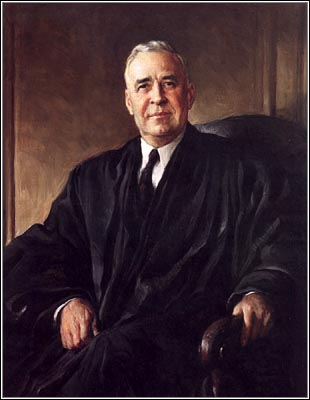On this day in 1943, President Franklin D. Roosevelt nominated Wiley B. Rutledge to the Supreme Court.
Rutledge was President Roosevelt’s eighth and final appointee to the Court. At the time of his appointment, he had been serving on the US Court of Appeals for the District of Columbia Circuit since 1939. The Senate confirmed him just four days later.

Rutledge replaced James F. Byrnes, who spent only 16 months on the bench (the second shortest tenure in Court history). Rutledge was a lifelong Democrat and, prior to his appointment to the judiciary, was a vocal supporter of Roosevelt’s New Deal.
During his time on the Supreme Court, Rutledge established himself as one of the most aggressive proponents of judicial protection for individual rights. He joined the liberal wing of the Court in advocating for the application of the Bill of Rights to the states. He wrote a dissent in a case in which the majority concluded that a law that prohibited women from tending a bar did not the Fourteenth Amendment’s equal protection clause. And during his tenure he was one of the Court’s most committed supporters of civil rights for African Americans.
Among Rutledge’s law clerks was future Justice John Paul Stevens, who worked for Rutledge directly after graduating from Northwestern Law School in 1947 and went on to serve on the Court from 1975 to 2010.
Rutledge served on the Court until he died of a stroke in 1949.
This post was drafted by ISCOTUS Fellow Elisabeth Heiber, Chicago-Kent Class of 2019, and was edited by ISCOTUS Editorial Coordinator Anna Jirschele, Chicago-Kent Class of 2018, and ISCOTUS Co-Director and Chicago-Kent faculty member Christopher Schmidt.
